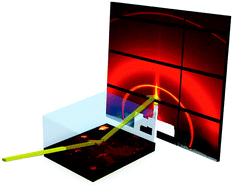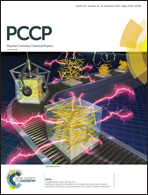Formation of highly ordered liquid crystalline coatings – an in situ GISAXS study†
Abstract
Functional coatings based on self-assembled lyotropic liquid crystals have the potential for applications such as biosensing, drug delivery and nanotemplating. Here we demonstrate the design and in-depth characterization of glycerol monooleate based liquid crystalline coatings on silicon wafers using drop casting and spin coating techniques. In situ time-resolved grazing incidence small angle X-ray scattering (GISAXS) measurements were used to monitor the coating formation and its response to increasing relative humidity conditions between 5 and 100%. Additional atomic force microscopy (AFM) measurements were applied to visualize the coating nanostructure. Structural transformations through ordered intermediate phases to the sponge- and lamellar phase were observed during ethanol evaporation. Relative humidity dependent GISAXS results revealed gradual phase transitions from the lamellar via the gyroid type cubic phase to the diamond type bicontinuous cubic structure between 5 and 100% relative humidity. The detailed insights into the formation and transformation of the coating nanostructures in this system may provide essential knowledge for the comprehensive design of functional nanostructured surfaces in biomedical applications.

- This article is part of the themed collection: 2018 PCCP HOT Articles


 Please wait while we load your content...
Please wait while we load your content...